
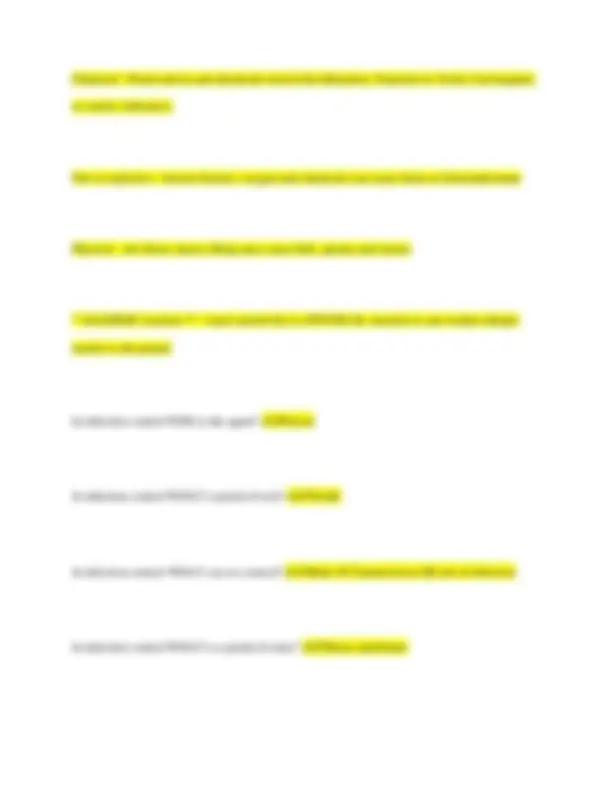
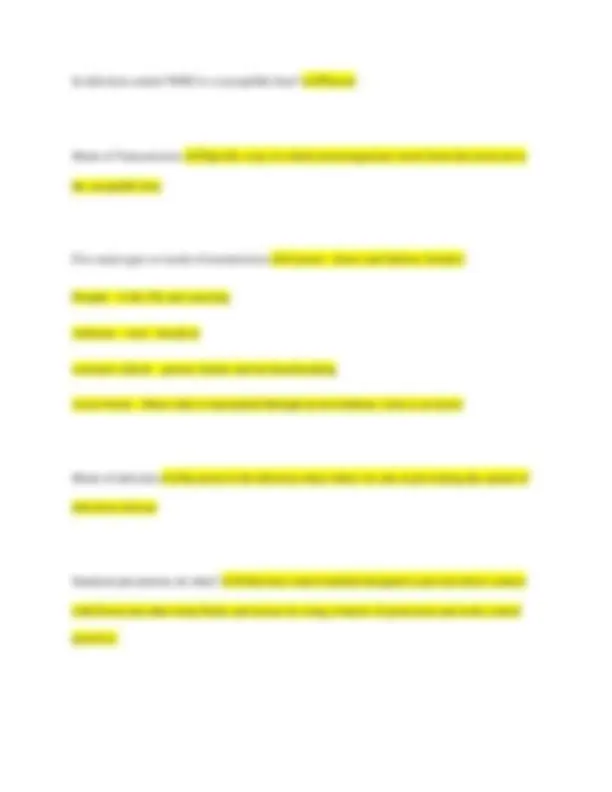
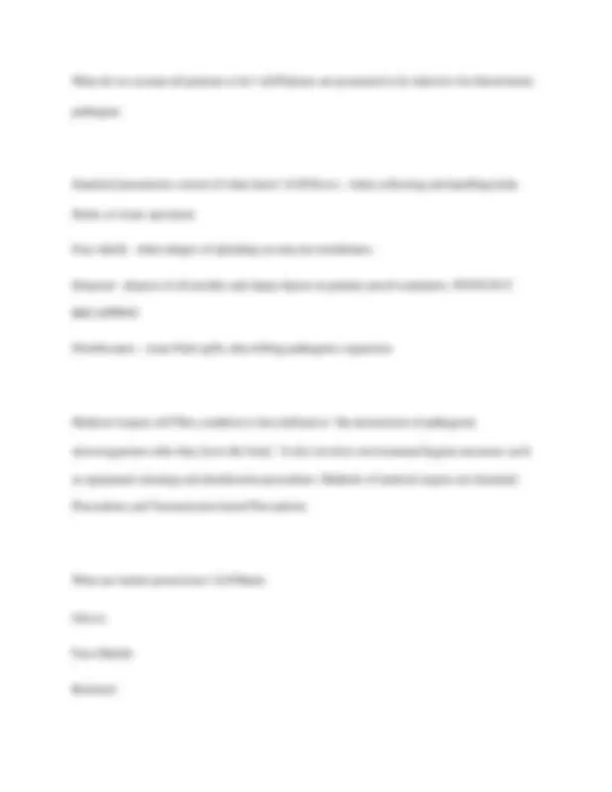

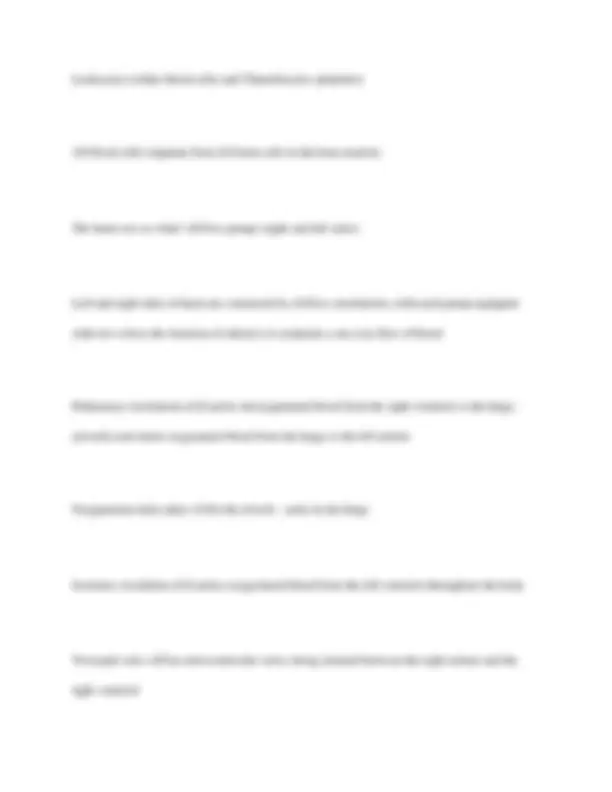
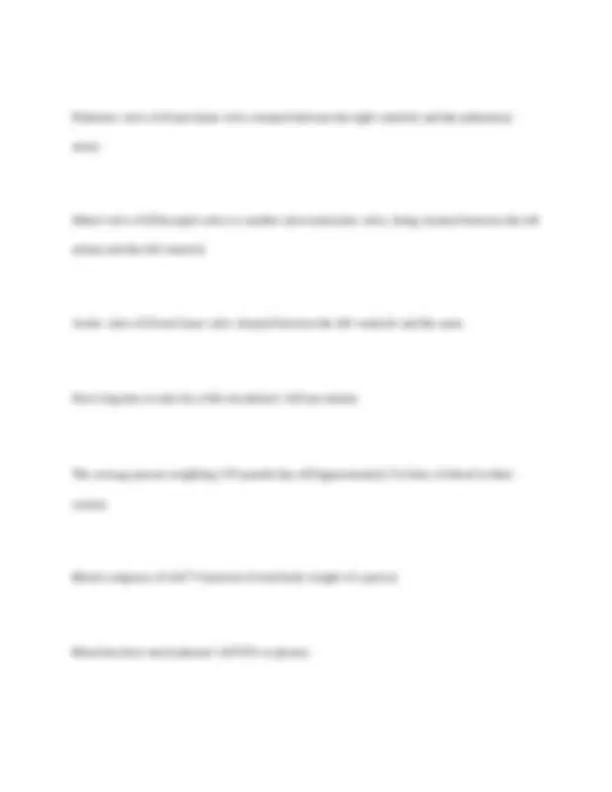
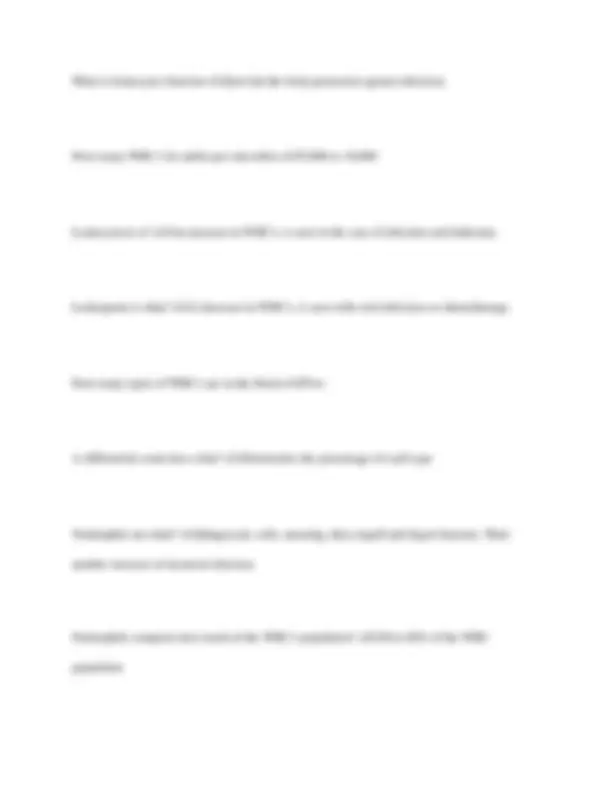
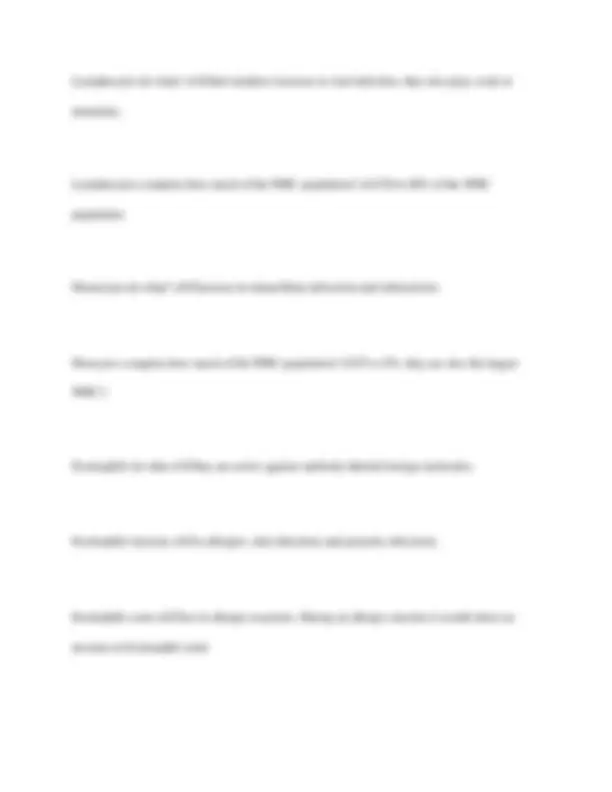
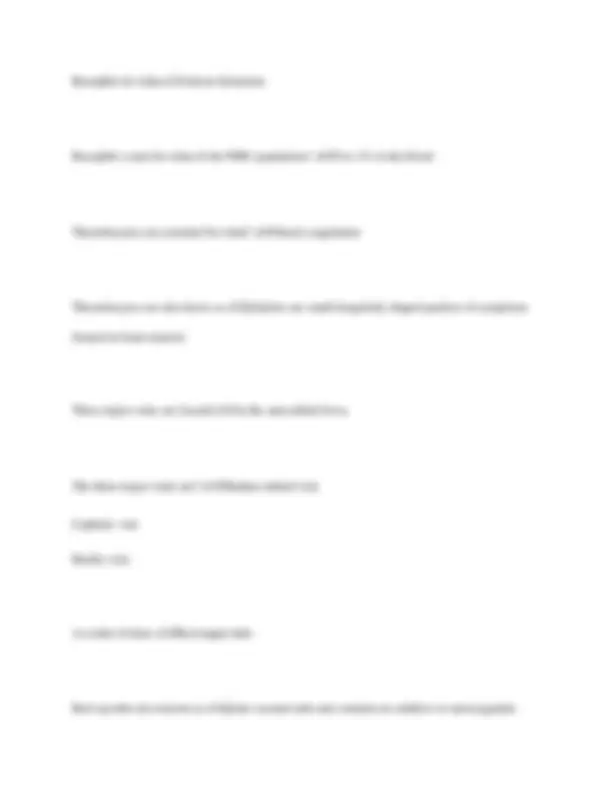
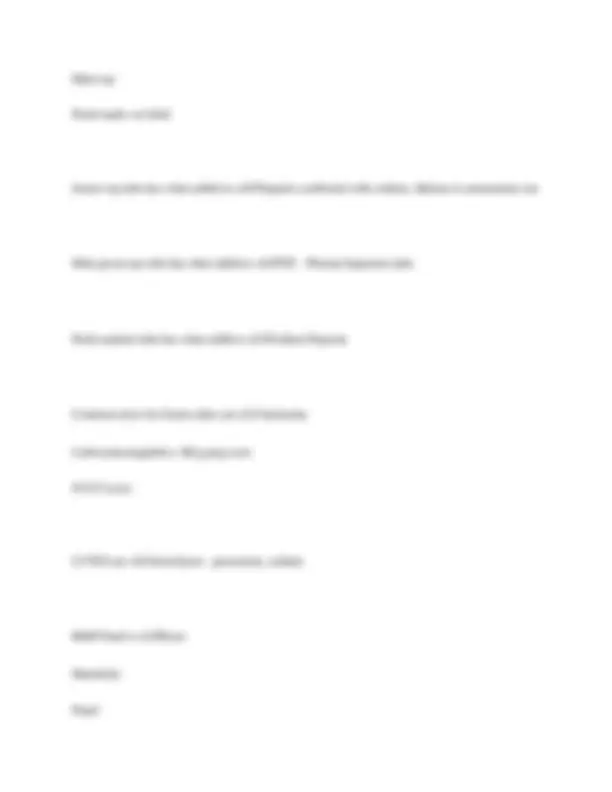
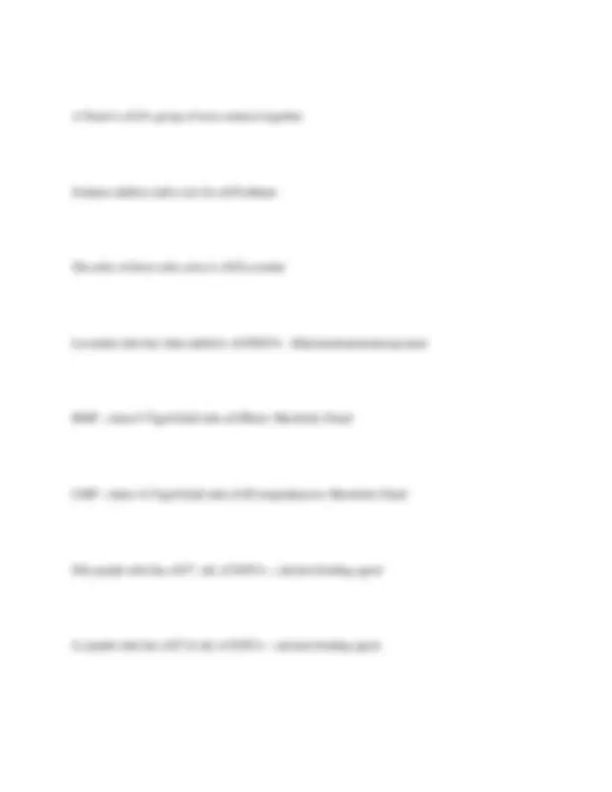
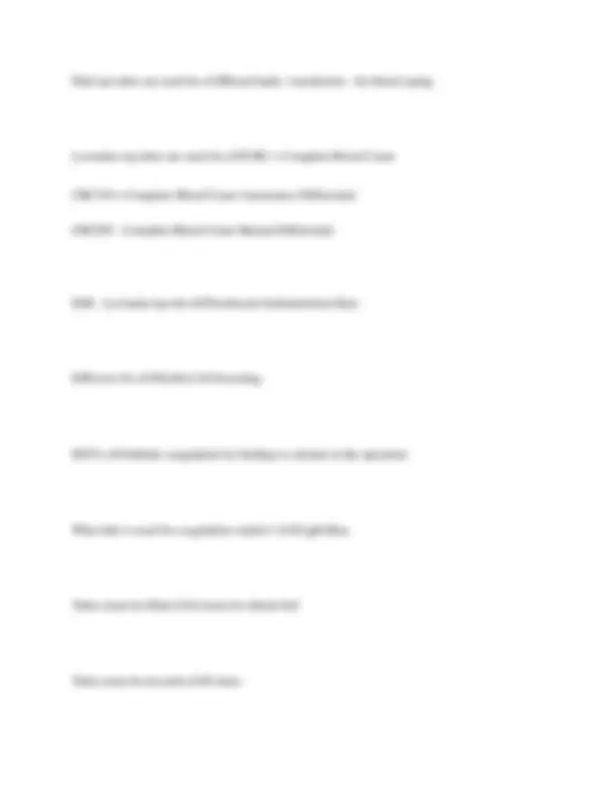
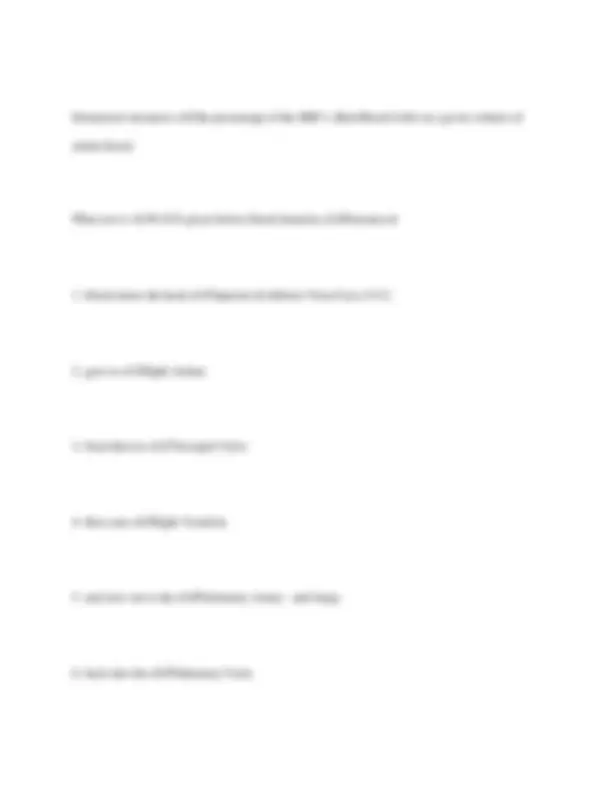
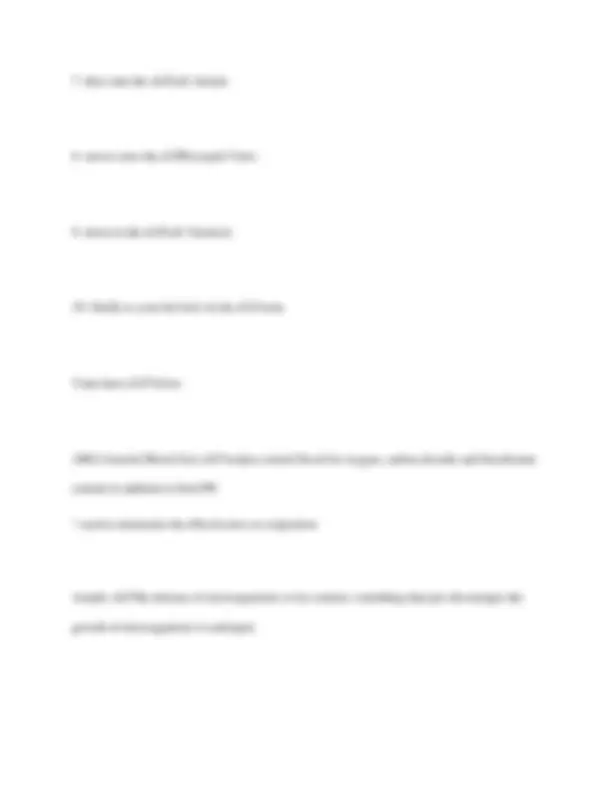
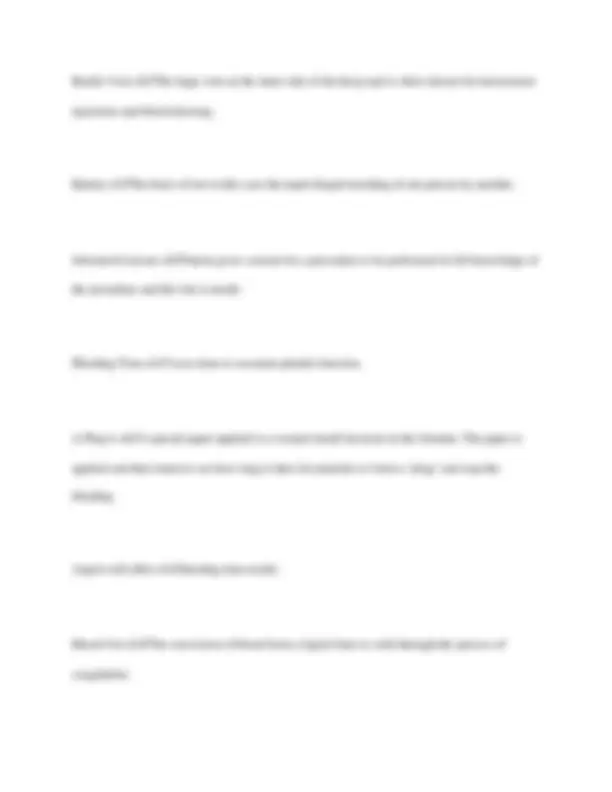
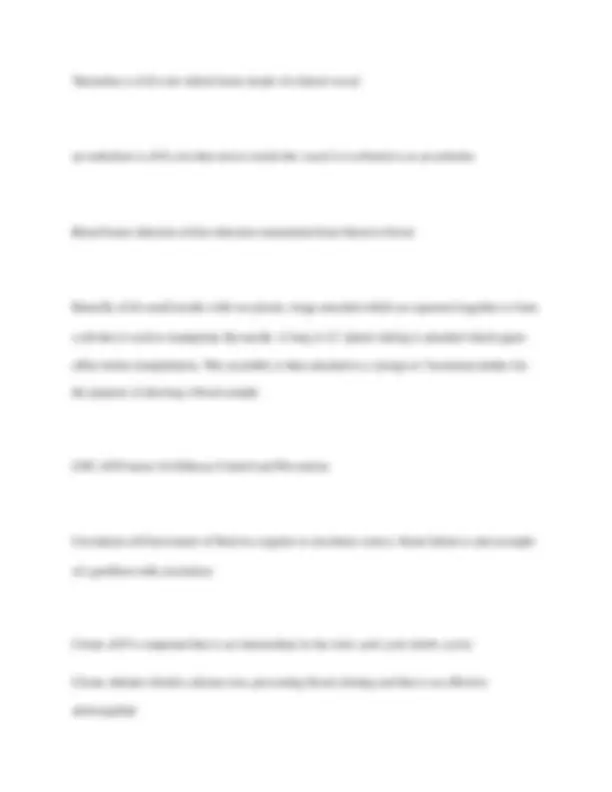
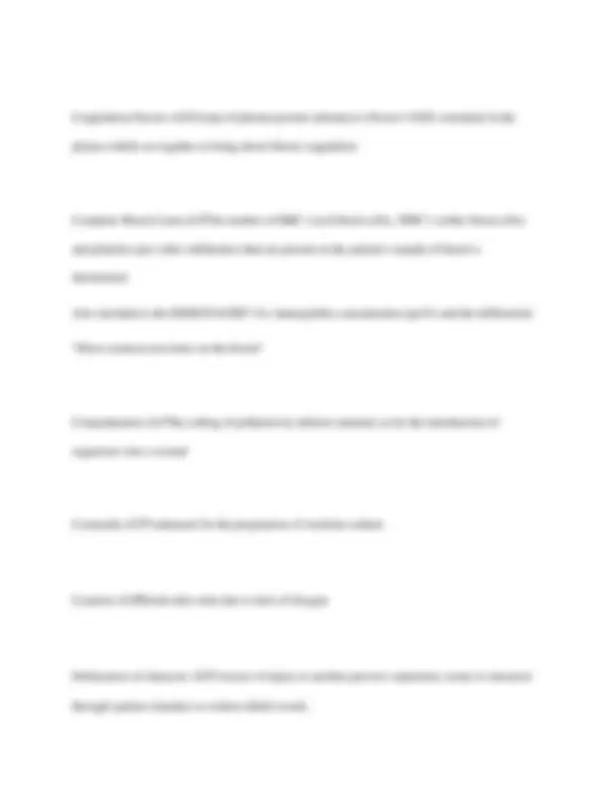
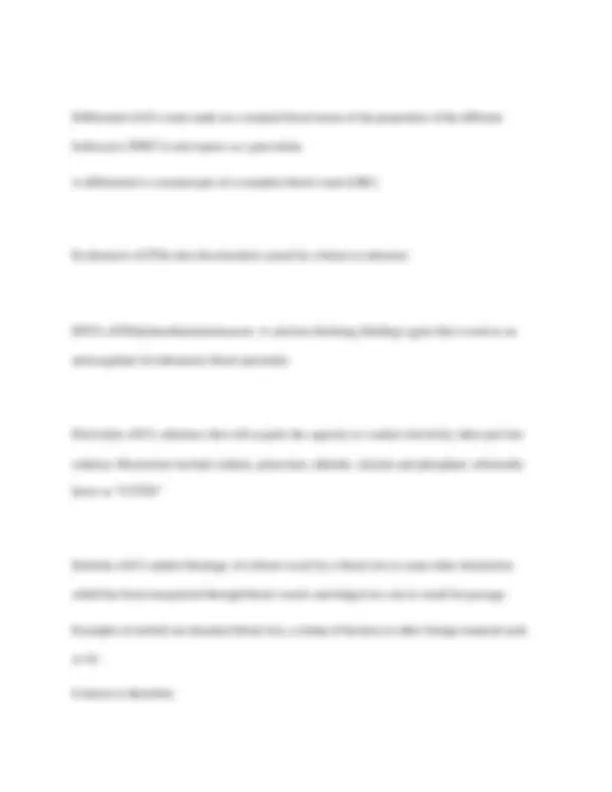
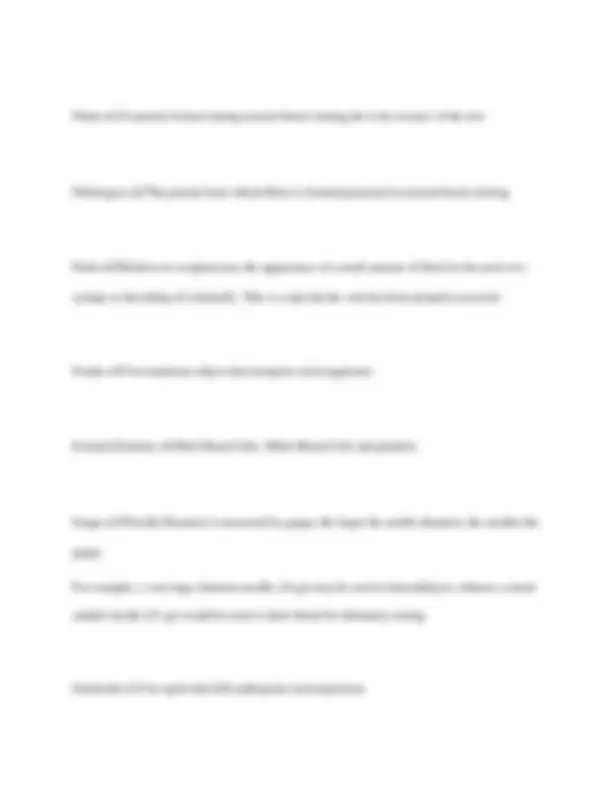
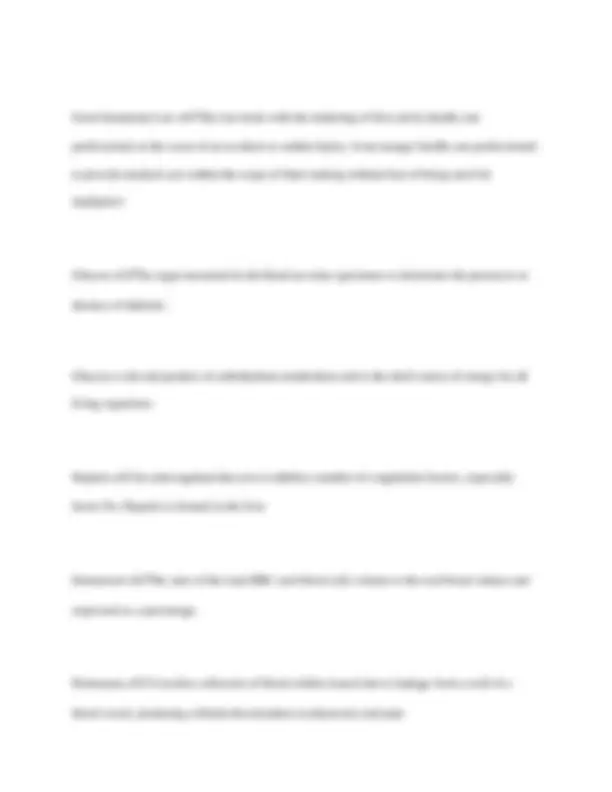
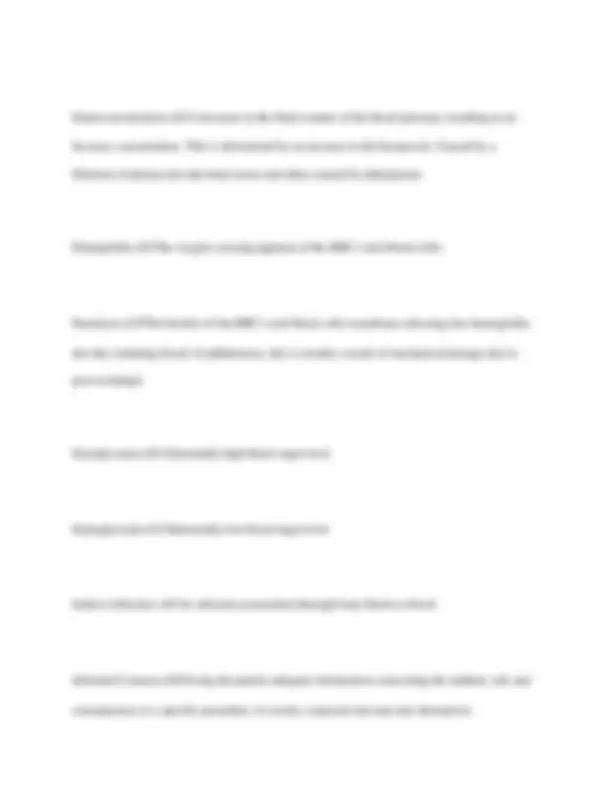
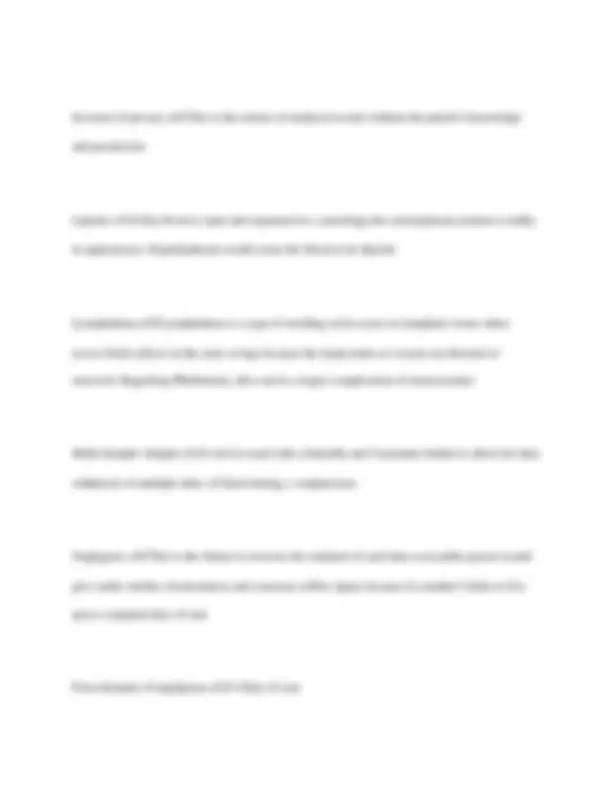
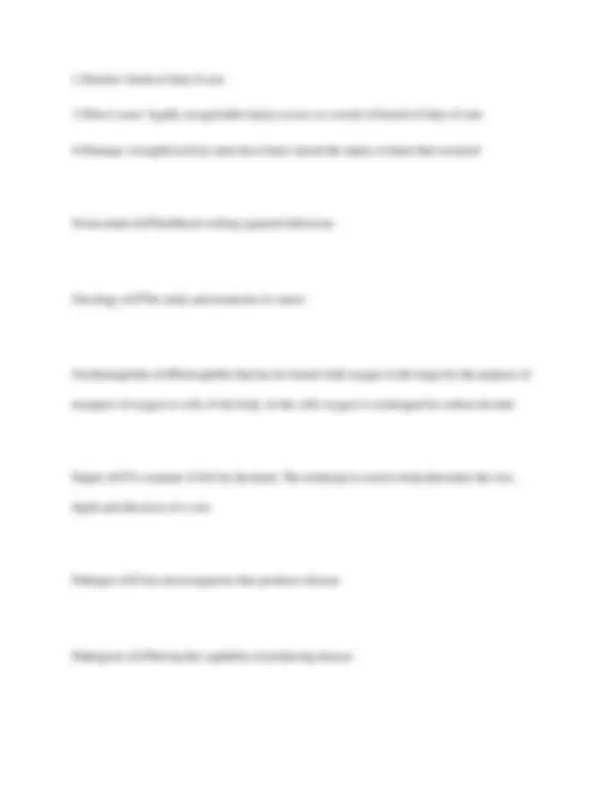
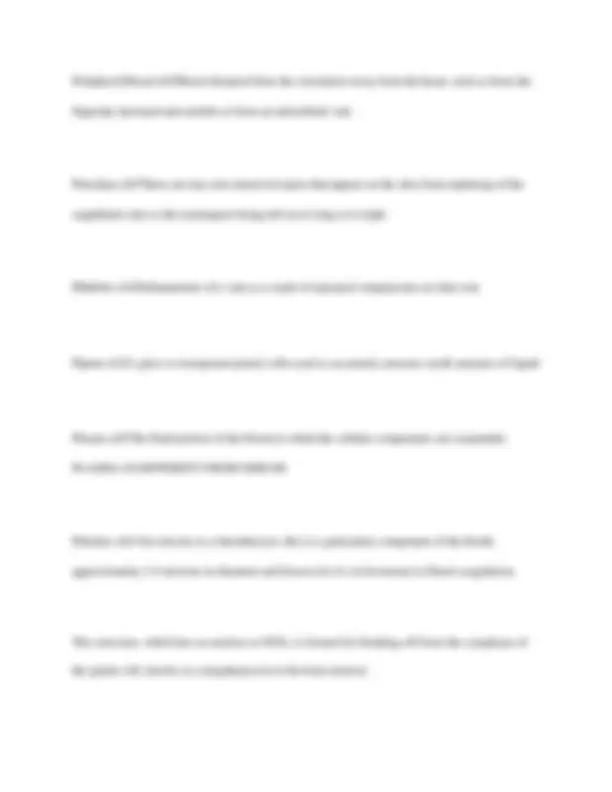
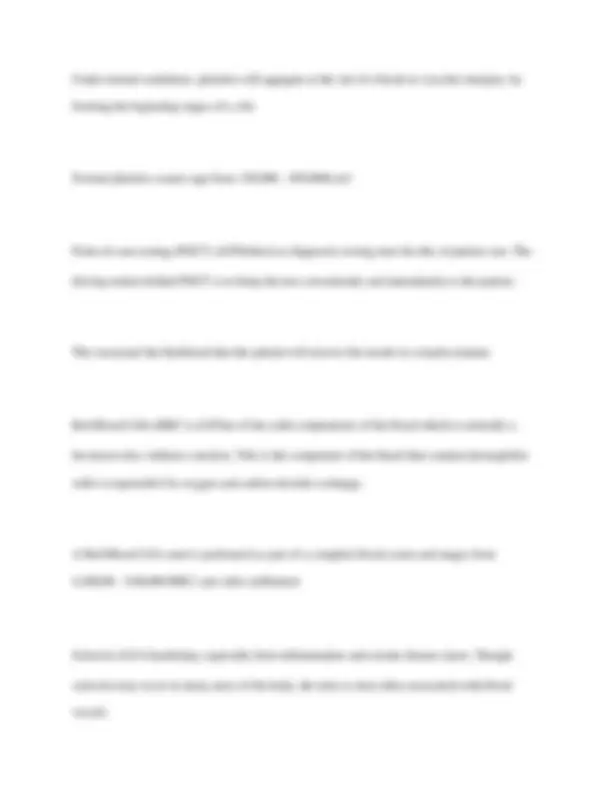
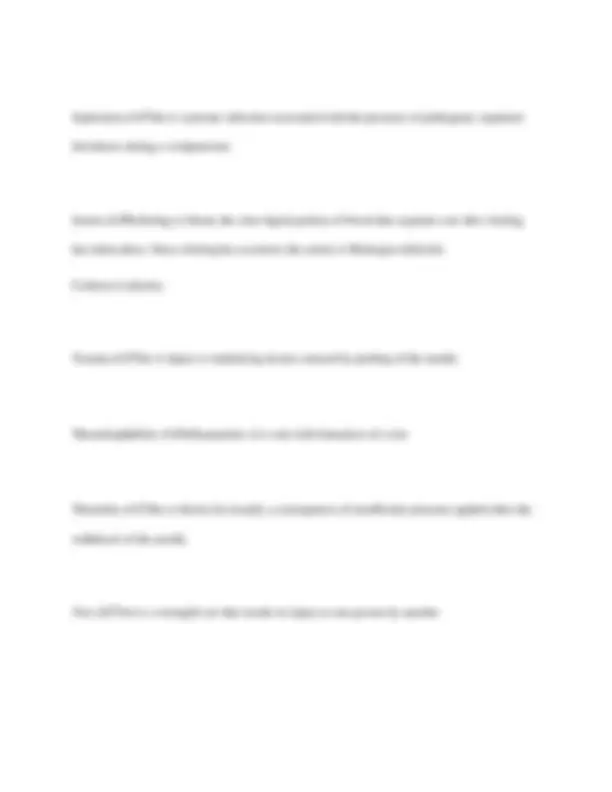
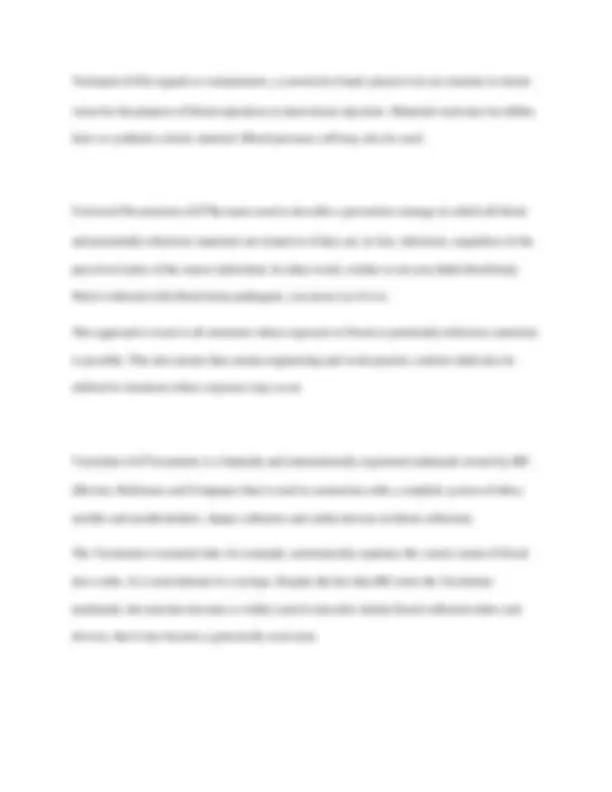
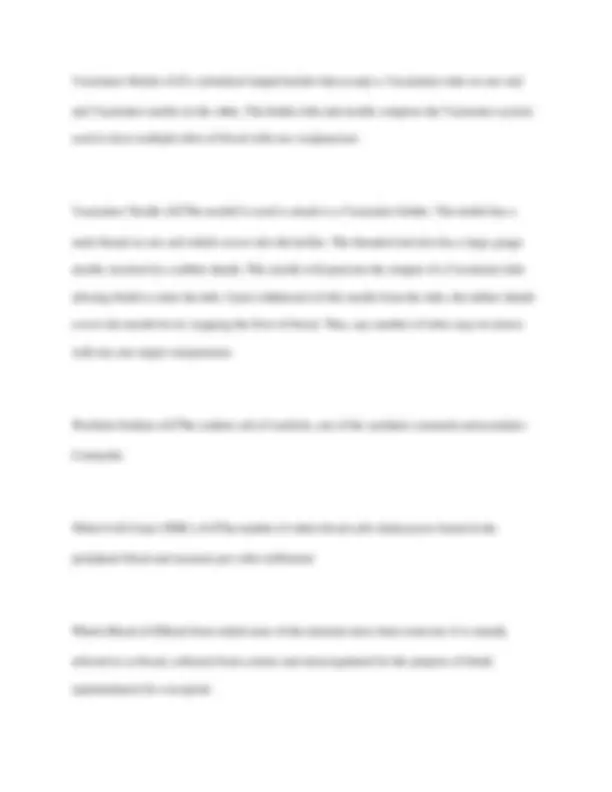


Study with the several resources on Docsity

Earn points by helping other students or get them with a premium plan


Prepare for your exams
Study with the several resources on Docsity

Earn points to download
Earn points by helping other students or get them with a premium plan
Community
Ask the community for help and clear up your study doubts
Discover the best universities in your country according to Docsity users
Free resources
Download our free guides on studying techniques, anxiety management strategies, and thesis advice from Docsity tutors
OSHA ✔✔Occupational Saftey & Health Administration What vaccination does OSHA require all health care personnel get? ✔✔OSHA requires that all health care personnel exposed to blood and other bodily fluids must receive a vaccination against Hepatitis B Pulmonary Edema ✔✔Fluid in the lungs How much blood can a person donate in a session? ✔✔500 mL Patients have the right to what? ✔✔Under the Patient Bill Of Rights they always have the option to decline medical treatment and to know what tests are being performed on them. What can you NOT give a patient? ✔✔Results or a diagnosis. Because you are not medically qualified to do so.
Typology: Exams
1 / 36

This page cannot be seen from the preview
Don't miss anything!





























OSHA ✔✔Occupational Saftey & Health Administration What vaccination does OSHA require all health care personnel get? ✔✔OSHA requires that all health care personnel exposed to blood and other bodily fluids must receive a vaccination against Hepatitis B Pulmonary Edema ✔✔Fluid in the lungs How much blood can a person donate in a session? ✔✔500 mL Patients have the right to what? ✔✔Under the Patient Bill Of Rights they always have the option to decline medical treatment and to know what tests are being performed on them. What can you NOT give a patient? ✔✔Results or a diagnosis. Because you are not medically qualified to do so.
Negligence is? ✔✔Failure to give appropriate care. DON'T BE NEGLIGENT! PPE stands for? ✔✔Personal Protective Equipment One of the most important practices is? ✔✔Hand Washing is one of the most important (and easiest) practices used to prevent transmission of bloodborne pathogens Needles should never be ✔✔recapped Sharps containers must be what? ✔✔puncture-resistent, leak proof on the sides and bottom and must be labeled or color-coded Types of Hazards ✔✔Biologic - Infectious agents that can cause bacterial, viral, fungal or parasitic infections Sharps - Needles, lancets and broken glass can puncture and cut, causing blood-borne pathogen exposure
In infection control WHO is a susceptible host? ✔✔Person Mode of Transmission ✔✔Specific ways in which microorganisms travel from the reservoir to the suseptible host Five main types or mode of transmission ✔✔contact - direct and indirect (fomite) Droplet - Cold, Flu and sneezing Airborne - viral - breath in common vehicle - person, fomite and not handwashing vector borne - illness that is transmitted through an invertebrate, such as an insect Mode of infection ✔✔the point in the infection chain where we aim at preventing the spread of infectious disease Standard precautions do what? ✔✔Infection control method designed to prevent direct contact with blood and other body fluids and tissues by using a barrier of protection and work control practices.
What do we assume all patients to be? ✔✔Patients are presumed to be infective for blood-borne pathogens Standard precautions consist of what itmes? ✔✔Gloves - when collecting and handling body fluids, or tissue specimen Face shield - when danger of splashing on mucous membranes Disposal - dispose of all needles and sharp objests in punture-proof containers, WITH OUT RECAPPING Disinfectants - clean fluid spills, thus killing pathogenic organisms Medical Asepsis ✔✔This condition is best defined as "the destruction of pathogenic microorganisms after they leave the body". It also involves enviromental hygien measures such as equipment cleaning and disinfection procedures. Methods of medical asepsis are Standard Precautions and Transmission-based Precautions What are barrier protections? ✔✔Masks Gloves Face Shields Resirator
What phase is best practice ✔✔"pleasant with the patient and professional with the poke". If patient has an I.V. where do you draw blood? ✔✔Downstream from the I.V. Double Mastectomy patients should ONLY have blood drawn from what? ✔✔Hands Left Mastectomy patients should have blood drawn from what side? ✔✔Right side What is a Fistula? ✔✔artificial connections of veins What is a Graft? ✔✔artificial artery connection to vein Sclerosis is? ✔✔Hard and cord like veins For obese patients what vein is used? ✔✔Cephalic Vein is most likely to be the one you can palpate and draw blood from in an obese patient Cephalic means what? ✔✔Head
Most common complication in Phlebotomy ✔✔Hematoma To prevent a Hematoma ✔✔prevented if pressure is placed on the venipuncture site until bleeding stops If a patient faints what is the 1st thing to do? ✔✔GET the needle out of the arm Vasovagal Syncope is ✔✔fainting, dizziness before, during or after venipuncture Circulatory System funtion ✔✔is todeliver oxyge, nutrients, hormones and enzymes to the cells. Transport cellular waste such as carbon dioxide and urea to the organs where they can be expelled from the body. Circulatory exchange is done where? ✔✔capillary level 45% of blood is ✔✔formed elements - Erythrocytes (red blood cells) = 99% of formed elements.
Pulmonic valve ✔✔semi lunar valve situated between the right ventricle and the pulmonary artery Mitral valve ✔✔(bicuspid valve) is another atrioventricular valve, being situated between the left atrium and the left ventricle Aortic valve ✔✔semi lunar valve situated between the left ventricle and the aorta How long does it take for a full circulation? ✔✔one minute The average person weighting 155 pounds has ✔✔approximately 5-6 liters of blood in their system. Blood composes of ✔✔ 7 - 9 percent of total body weight of a person Blood has how much plasma? ✔✔55% is plasma
Plasma is what? ✔✔a clear, pale yellow fluid what does plasma do? ✔✔it carries nutrients, lipids, glucose, sodium, magnesium, calcium, potassium, oxygen, carbon dioxide, nitrogen, antibodies, as wells as vitamins and hormones ect. What is 45% of blood? ✔✔Red blood cells, White blood cells and Platelets. Known as the formed cellular elements How long does your body take to regenerate RBC you lose during donation ✔✔6 to 8 weeks if you donate the maximum of 500 mL Three layers of the heart are? ✔✔Endocardium Myocardium Epicardium Endocardium ✔✔the endothelial inner layer lining of the heart Myocardium ✔✔the muscular middle layer. This is the contractile element of the heart
What is leukocytes function ✔✔provide the body protection against infection. How many WBC's for adults per microliter ✔✔5,000 to 10, Leukocytosis is? ✔✔an increase in WBC's, is seen in the case of infection and leukemia. Leukopenia is what? ✔✔a decrease in WBC's, is seen with viral infection or chemotherapy How many types of WBC's are in the blood ✔✔Five A differential count does what? ✔✔determines the percentage of each type Neutrophils are what? ✔✔phagocytic cells, meaning, they engulf and digest bacteria. Their number increase in bacterial infection. Neutrophils comprise how much of the WBC's population? ✔✔40 to 60% of the WBC population
Lymphocytes do what? ✔✔their numbers increase in viral infection, they also play a role in immunity. Lymphocytes comprise how much of the WBC population? ✔✔20 to 40% of the WBC population Monocytes do what? ✔✔Increase in intracellular infections and tuberculosis Moncytes comprise how much of the WBC population? ✔✔ 3 to 8%, they are also the largest WBC's Eosinophils do what ✔✔they are active against antibody-labeled foreign molecules. Eosinophils increase ✔✔in allergies, skin infections and parasitic infections Eosiniphils come ✔✔first in allergic reactions. During an allergic reaction it would show an increase in Eosinophil count
collected blood clots, by normal coagulation process is ✔✔ 30 minutes Do you need to invert a Red Tube ✔✔No Common test for red tubes are ✔✔Serum chemistry, Serology, Blood bank Arteria Blood Gas (ABG) sample must be run within ✔✔ 15 minutes of collection Arterial blood is used to determine ✔✔blood gas levels and blood PH. Usually collected by a nurse or respiratory therapist Basal state is ✔✔When the patient has fasted and not excersiced in 12 hours Do you note if a patient has not fasted? ✔✔YES! 2nd order of draw tube color is ✔✔Light blue
Light blue tube has what additive ✔✔Sodium Citrate Different ratios Light blue tubes MUST be inverted how many times ✔✔5 to 10 Light blue tubes are used to test ✔✔coagulation determinations on plasma specimens.
A Panel is ✔✔A group of tests ordered together Sodium additive tubes test for ✔✔Lithium 5th order of draw tube color is ✔✔Lavendar Lavendar tube has what additive ✔✔EDTA - Ethylenediaminetetraacetate BMP - chem 8 Tiger/Gold tube ✔✔Basic Metobolic Panel CMP - chem 14 Tiger/Gold tube ✔✔Comprehensive Metobolic Panel Drk purple tube has ✔✔7. mL of EDTA - calcium binding agent Lt purple tube has ✔✔3.6 mL of EDTA - calcium binding agent
Pink top tubes are used for ✔✔Blood banks / transfusion - for blood typing Lavendar top tubes are used for ✔✔CBC = Complete Blood Count CBCAN = Complete Blood Count Automatice Differential CBCDN - Complete Blood Count Manual Differential ESR - Lavendar top tub ✔✔Erythocyte Sedimentation Rate ESR tests for ✔✔Sickle Cell Screening EDTA ✔✔inhibits coagulation by binding to calcium in the specimen What tube is used for coagulation studies? ✔✔Light Blue Tubes must be filled ✔✔at least two-thirds full Tubes must be inverted ✔✔ 8 times